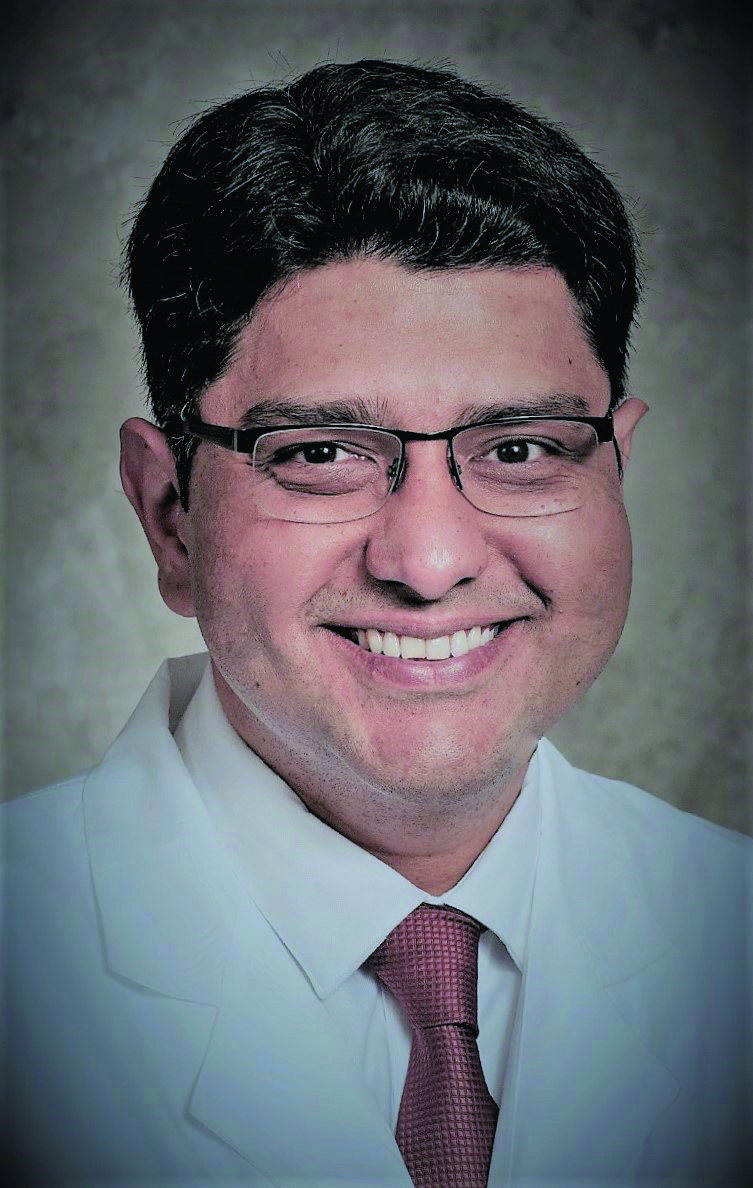Interview with an Expert
Communication is the core of a healthy physician-patient relationship

Director of Lymphoid Malignancies Program,
Harold C. Simmons Comprehensive Cancer Center,
University of Texas Southwestern Medical Center
In his practice, Dr. Awan has found that an open relationship with his patients helps them better manage their chronic lymphocytic leukemia (CLL) together. He shared his approach with Patient Resource.
Usually the first time I see patients, it is to share their experience around their diagnosis. This is often an emotional appointment, so I take a good amount of time to explain CLL in general. I tell them it is a very heterogeneous disease, meaning there are multiple types of ways it can present itself. To understand the specific disease type that they have, we have to perform additional tests. The results will tell us what kind of cancer we’re dealing with and help guide our management. I encourage them to learn more about CLL by recommending advocacy groups and resources.
At the next appointment, we discuss test results and any questions they might have. I’m often asked, “What’s my stage?” People commonly think of cancer as solid tumors. When a solid tumor is Stage IV, it generally means it has spread to other parts of the body. CLL is a blood cancer and we have blood all over the body, so this doesn’t apply. Instead, I talk about the International Prognostic Index (IPI) and, specifically, the CLL-IPI score. It’s a system that assigns values for the risk factors of recurrence that we’ve identified from their test results, which helps us plan our strategy.
If treatment is necessary, we discuss what will be most effective for them. But nearly half of all people who are newly diagnosed with CLL are either asymptomatic or have early-stage disease, and they don’t need treatment right away. That sounds like a great thing, but so often it doesn’t feel that way to patients. In their minds, they’ve just been diagnosed with cancer, and their doctor isn’t doing anything about it. They have seen people who are diagnosed with breast, lung or other cancers begin treatment immediately, so this doesn’t make sense — and it can cause a great deal of stress and anxiety.
I explain that we simply don’t treat unless it’s necessary. Treatment may introduce side effects and other complications, especially if they have other health issues. The bottom line is the risks of intervention don’t justify the result. Additionally, early treatment doesn’t make people live longer, and it won’t cure CLL.
To try to alleviate their concerns, I assure them we are doing something. We are entering what I call active surveillance, and I share my expectations for what will happen next:
- People tend to zero in on their white blood cell count, and they get concerned if it goes up. We are not going to worry about that. I expect their numbers to go up and down. It’s a lot like the stock market. A number on a particular day isn’t important. Instead, we look at trends.
- The CLL-IPI score and the mutational testing done at their first visit enables me to predict how their CLL will act and when it will be time to actively treat, so they must keep their routine follow-up visits to allow me to look for those trends.
- If their spleen or lymph nodes get enlarged, it is not unexpected, and we will monitor closely.
- Continuing health screening appointments, such as mammograms, is important. If something such as a swollen lymph node shows up, for example, it may or may not be related to the CLL. As long as they keep me informed, I can help them navigate the results. I don’t want them to worry needlessly.
- If they become symptomatic, which may include a fever, fatigue, drenching night sweats or very swollen lymph nodes, they must let me know. This is very important, and together with the symptoms and the bloodwork results, we will decide the best time for starting treatment.
Communication is very important. The more we communicate, the more my patients will trust me and I will trust them to stay on their follow-up schedule.
Patients often ask what they can do. Maintaining a healthy lifestyle is always encouraged. It can also help relieve the stress that some people feel regarding active surveillance. I do, however, caution against making a drastic change that won’t be sustainable.
They also frequently ask about complementary therapies, such as green tea, yoga and supplements. Though many people report feeling better when they use them, we don’t yet have the FDA approvals to recommend them. I’m not against the use of supplements, but some can interfere with an existing therapy, such as blood pressure medicine or the treatment for their CLL. I want my patients to be safe, so I ask them to tell me when they start something new.
This is an exciting time for CLL. Research is advancing so rapidly that it’s hard to keep up, even for CLL specialists. That alone speaks volumes for why it is important to seek out a specialist. It is proven that working with a CLL specialist will increase your survival.
Today, while there is no cure, it really depends on how you define cure. Is it going five or ten years without a recurrence? Maybe it is. We’ve learned to manage other incurable health conditions effectively, such as hypertension and diabetes. We will do the same with CLL until we have a true cure.


